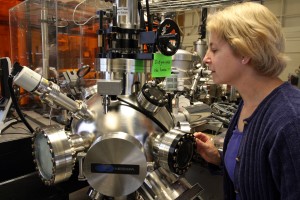Computing with Light May Answer Need for Speed
-
-
slice.mit.edu
Filed Under
Recommended

In many communication systems, data is transmitted via light beams through optical fibers. This transmission can be burdensome and relatively slow since once the optical signal arrives at its destination, it must be converted to electronic form, processed through electronic circuits, and finally converted back to light. MIT researchers have created a solution for this multi-tasked process, developing a new device that eliminates the need for conversion of optical to electronic signals.
From MIT News:Ross, working in a group that includes, Thomas Lord Professor of Materials Science and Engineering Lionel Kimerling, Lei Bi ’11, and Juejun Hu PhD ’09, have developed what Ross calls a “diode for light” described in the Nov. 13 issue of Nature Photonics. Similar to an electronic diode, the device allows light to flow in one direction, but blocks it from returning in the other direction.This technology could greatly boost the speed of data-transmission systems, for two reasons: First, light travels much faster than electrons. Second, while wires can only carry a single electronic data stream, optical computing enables multiple beams of light, carrying separate streams of data, to pass through a single optical fiber or circuit without interference. “This may be the next generation in terms of speed” for communications systems, (Toyota Professor of Materials Science Caroline) Ross says.
Researchers used a form of a transparent, magnetic material called garnet, which is commonly used in jewelry but inherently transmits light differently in one direction than in another. The material covers one half of a loop connected to a light-transmitting channel on the chip. The entire system can be created using standard microchip manufacturing machinery, making it much easier to commercialize than a system based on different materials.
What do you think? Could these advances replace the way fiber optic cables carry phone, TV and Internet signals? Let us know in the comments below or on Facebook.








